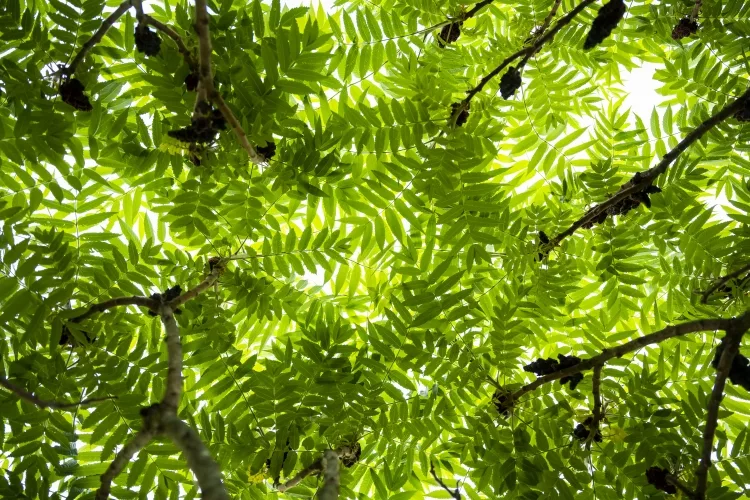reviewed by Christina Lopez
Vascular plants have another name, and they can be called trichophytes, which means the tube plants. The original vascular plants rapidly came for the domination of terrestrial ecosystems. Does the question arise that why were they even successful? the answer to this question is that it is mainly because of their tissues that are tubular and vascular like

The vascular tissues are the ones in which the plants are named and specialized for fluid transportation. Vascular tissues comprise narrow and cells that are arranged from end to end forming tubes. there are two types of different vascular tissues that are the xylem and phloem
The primary vascular plants originated about 420 million years ago. They evolved from moss-like bryophyte ancestors. Moreover, they had a life cycle dominated by the diploid sporophyte generation. On continuation to evolve, early vascular plants became more plant-like in other ways as well.
There is a massive diversity of vascular plants, and that includes club mosses and ferns.
Fern allies are a diverse group of vascular plants that are not true ferns. True ferns are defined to be something else. A fern ally is dispersed around by shedding spores for the initiation of alternation of generations. The surviving descendant of the vascular plants is the clubmosses and the ferns. More vascular plants come under these categorized plants. There are about 1200 species of clubmoss and more than about 20000 species of ferns. Both of them are seedless, and their reproduction is through spores.
Clubmosses are similar to mosses and produce squat to the earth. They are different from mosses; they have stems, roots, and leaves, although the leaves are tiny.
Ferns are more alike to the “typical” plants. They grow very tall and have broad leaves.
Some even consider Pteridophytes to have leaves known as fronds and vascular plants, roots, and sometimes factual stems, and tree ferns have full trunks.
Horsetails are connected to ferns in that they have a vascular system. They never industrialized the aptitude for the reproduction of seeds. They might be a minuscule unyielding for one to see because most of them are obsolete. They are improved and able to endure in numerous atmospheres; they can find them from very northerly and southern freedoms to the equator. Contrasting ferns, these are intimidating plants. While ferns are compassionate, horsetails are wild plants and even have silica, a silicon-based composite, in their epidermal cells.
Most of the ferns from steamy rain timberlands are epiphytes, which means they only produce on other plant classes; their liquid comes from the moist air or precipitation consecutively down tree trunks and branches. Some chastely aquatic ferns such as water fern or water velvet Slavonia molest and mosquito ferns, also known as AZ olla species.
Pteridophytes do not have flowers or seeds either; instead, they develop into trees like strobilus. (about 250 species), they are classified under the category often called maidenhair ferns. They are considered by sporangia located on the underneath of minor lappets of flesh along with the leaflet limits.
Northern maidenhair is also known as A. pedatum. They are found in the forests of eastern North America and adjacent families in western North America and East Asia.
Ground pine, also known as Dendrolycopodium obscurum, a 25-cm- (10-inch-) high plant, has below ground-running stalks. It is natural to humid forests and swamp limitations in northern North America to foothill parts farther south and eastern Asia.
Alpine club moss, also known as Diphasiastrum alpinum, with yellowish or dirty leaves, is natural to taciturn woodlands and Alpine mountains in Eurasia northern North America.
Ground cedar, also known as D. digitatum, natural to northerly North America, products fanlike branches are approximating juniper branchlets.
Members of the genus Lycopodiella are also known as bog club mosses. They breed in bogs and other marshland environments nearly universal, and various classes are instinctive to sultry expanses of the Americas.
The pygmy club moss, also known as Phylloglossum Drummond, is the only member of its type and is mostly found in New Zealand and Australia.
Polystichum, Adiantum, and Cyathea. Class Equisetopsida (horsetails, scouring rushes) Vascular plants; sporophyte differentiated into stem, leaf, and root; stems ribbed and jointed, monopodial; minute leaves whorled at the nodes; vascular tissue organized into bundles; sole living genus.
Mosquito fern is also known as genus Azolla, a genus of six to seven classes of the family Salviniaceae’s aquatic ferns. Associations of Azolla are dispersed closely universally but are most diverse in stifling regions. Mosquito ferns float on the surface of freshwaters, sometimes becoming beached on muddy sets. An allusion can be their name to the fact that the florae sometimes methodically cover the superficial of any body of water, preventing parasites and other bugs from all-pervading through to the water to lay eggs. Mosquito ferns are refined for their agricultural significance and ornamental value.
The tree ferns come under the category of The order Cyatheales, which is a taxonomic separation of the fern class, Polypodiopsida. No robust morphological features characterize all of the Cyatheales, but DNA sequence data indicate the order of a tree fern is monophyletic.
Filmy ferns often appear as very dusky green or even black masses and maybe erroneous for a robust moss. The rhizome is usually reedy and sinewy, and the leaves variously pinnate with a single strand of vascular tissue present in the vascular plant. As in most ferns, new leaves have circinate vernation. In most classes, the front, apart from the vascular tissue, is only an epithelial cell thick, and they do not have stomata.
Granite mosses are also a type of vascular plant. They fall into the category andreaespsida and belong to the family andreaeaceae.
Selaginella is considered to be the sole genus of vascular plants. this class is included in a familiar paraphyletic group also known as the fern allies
So these were the vascular plants and their classes and the families that distinguish them from other classes of vascular plants.
 |
 |
 |
 |

About Christina Lopez
Christina Lopez grew up in the scenic city of Mountain View, California. For eighteen ascetic years, she refrained from eating meat until she discovered the exquisite delicacy of chicken thighs. Christina is a city finalist competitive pingpong player, an ocean diver, and an ex-pat in England and Japan. Currently, she is a computer science doctoral student. Christina writes late at night; most of her daytime is spent enchanting her magical herb garden.
 |
 |
 |
 |
Get new FREE Gifts. Or latest free growing e-books from our latest works.
Disable Ad block to reveal all the links. Once done, hit a button below
 |
 |
 |
 |